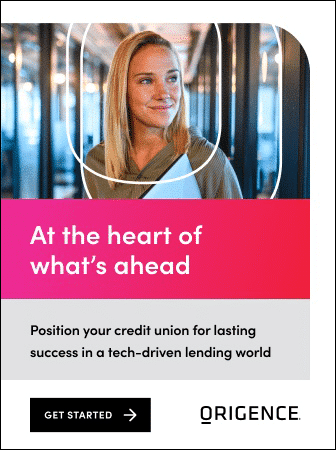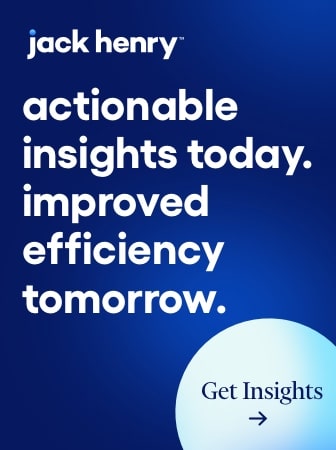LAS VEGAS — For digital marketers, balancing customer behavior, needs and expectations against the pursuit of maximum ROI is most of the battle. A digital growth strategy should be at the very center of that balancing act.
That’s the critical message attendees took away during interactive workshops held Monday at the annual The Financial Brand Forum in Las Vegas led by experts Nancy Harhut, co-founder and chief creative officer at HBT Marketing, and James Robert Lay, chief executive officer at the Digital Growth Institute.
All presented separately, in combination these expert sessions demonstrated that understanding both how consumers make decisions and how rapidly changing technology has changed the way people engage with financial products are key to forming a cogent growth strategy.
Emotion is at the Center of Consumer Behavior
Most human decisions are not rational, Harhut points out, noting that behavioral science has proven 95% of purchase decisions take place in the subconscious mind. Top CMOs are leveraging these principles to trigger automatic decisions, she says. It all starts with emotion.

Data Insights Deliver: Bank Reaches 113% ROMI with Segmentation
Uncover the techniques behind this bank's impressive ROI boost through data-driven marketing.
Read More about Data Insights Deliver: Bank Reaches 113% ROMI with Segmentation

Modern Customer Journey Mapping
Customers navigate a multi-touch, multi-channel journey before interacting with your brand. Do you deliver successful and seamless experiences at every touchpoint? Download webinar.
“It’s not about how your customers, prospects, etc. think. It’s about how they feel,” Harhut told attendees. “We make decisions for emotional reasons and then we later quickly justify those decisions with rational reasons.”
For that reason, marketers need to incorporate both emotional and rational components to their messaging. Adding an emotional component may seem easier for marketers moving products like vacations or fashion, for example, but doing so for financial products and services is as simple as understanding how being your customer will make a prospect feel, Harhut says.
“It’s not about how your customers, prospects, etc. think. It’s about how they feel. We make decisions for emotional reasons and then we later quickly justify those decisions with rational reasons.”
“If you can make someone feel something, they’ll connect with you,” Harhut says. “Behavioral scientists call it ’emotional contagion’, and it’s the best way to persuade someone. If you can show people feeling happy … enjoying the fruits of their saving, or having a happy interaction with a customer service person, we see what other people are doing and we start to feel the same way.”
In addition to pure emotion, marketers can leverage consumers’ propensity for loss aversion: “People are two times as motivated to avoid the pain of loss as they are to achieve the pleasure of gains,” Harhut says. This can be challenging for a marketer because so much of their work is rooted in prioritizing “the gains, the advantages, all the wonderful things that will happen if you just do what I’m telling you to do,” she says.
How? Think of the language you use. Prompts like “don’t miss” work better than simply “take advantage of,” for example. “Saying ‘don’t miss’ can really activate the idea of loss aversion,” Harhut says. Countdown clocks can provide visual and visceral reminders that people are running out of time.”
Another psychologically-backed tactic: Preserve some options while removing others. This helps prospective customers feel as though they are in control. “Behavioral scientists talk about something called ‘autonomy bias’. Humans have a deep-seated desire to assert control over our environments … We like to feel that we’re the ones calling the shots,” Harhut says. For example, you can help steer consumers in one direction by offering the most premium product first and eliminating options for lower tiers. “People bond with the best choices and don’t want to give them up,” she says. For example, if free swag is offered with the best tier, you can remove it from the next best tier to nudge customers toward the most premium option.
Marrying What We Know About Customers With Digital Pathways
While hacking behavioral science is a solid first step to getting a prospect interested, many financial institutions have struggled to pair that interest with digital pathways that successfully turn prospects into paying customers. James Robert Lay defines digital growth strategy as a “well-defined system and process centered around the modern consumer journey that unites marketing sales and service.” Building that process requires looking at the complete picture. “What I see financial firms failing to do here is see the buying journey from an emotive lens,” Lay told The Financial Brand Forum attendees.
Doing so requires combining a blend of that understanding, AI, customer data and digital marketing techniques into a single strategy, Lay told The Financial Brand ahead of the conference. He added that only 16% of banks and credit unions have mapped out digital consumer journeys, according to Digital Growth Institute data. And up to 95% of consumer loan applications are abandoned before they are ever completed, data show.
“Just because someone committed to hit the apply button doesn’t mean they’ll make it to the other side that leads to conversion,” Lay says.
Learn more: AI Will Be Critical to Delivering End-to-End Customer Journeys
Personalization is a vital method of incorporating the emotive piece for marketers. Marketers who spark client interest in a product or service need to embrace the necessary technology for scale: True personalization does require assembling a robust set of client data in order for AI and other tools to gather actionable insights.

“What gets measured gets improved, what gets measured, reported and optimized improves exponentially. This is the opportunity to transform the traditional perspective of regional banking and converting to that of digital e-commerce.”
Part of jumpstarting that conversion is as simple as bringing best practices over from the brick-and-mortar world. For example, many bank marketers secret shop their physical locations but not their websites — 86% of financial brands have never done this, Lay says. There are several qualitative and quantitative tools that can help you. And just having five people do qualitative site testing can identify up to 85% of gaps, he says. Doing this every 90 days or so is “how the best get better,” Lay says.
“What gets measured gets improved, what gets measured, reported and optimized improves exponentially. This is the opportunity to transform the traditional perspective of regional banking and convert it to that of digital e-commerce.”
Collecting customer data can be arduous but ultimately, even if you don’t use the data immediately, it’s a form of progress: “It’s about continuously making things better,” Lay says.
“Digital growth is like running a marathon” — nobody wakes up one day and runs 26.2 miles without training, Lay says. “You have ‘Couch to 5K,’ not ‘Couch to Marathon’. It’s a long process,” he says.
Madeleine “Maddy” Perkins (she/her) is the managing editor for The Financial Brand. Her award-winning work has appeared in American Banker, Financial Planning, MarketWatch and more. She is based in Hoboken, N.J. and holds an M.A. in journalism with an emphasis on business and economic reporting from the Craig Newmark Graduate School of Journalism at CUNY. Follow Maddy on X @perkedit.







